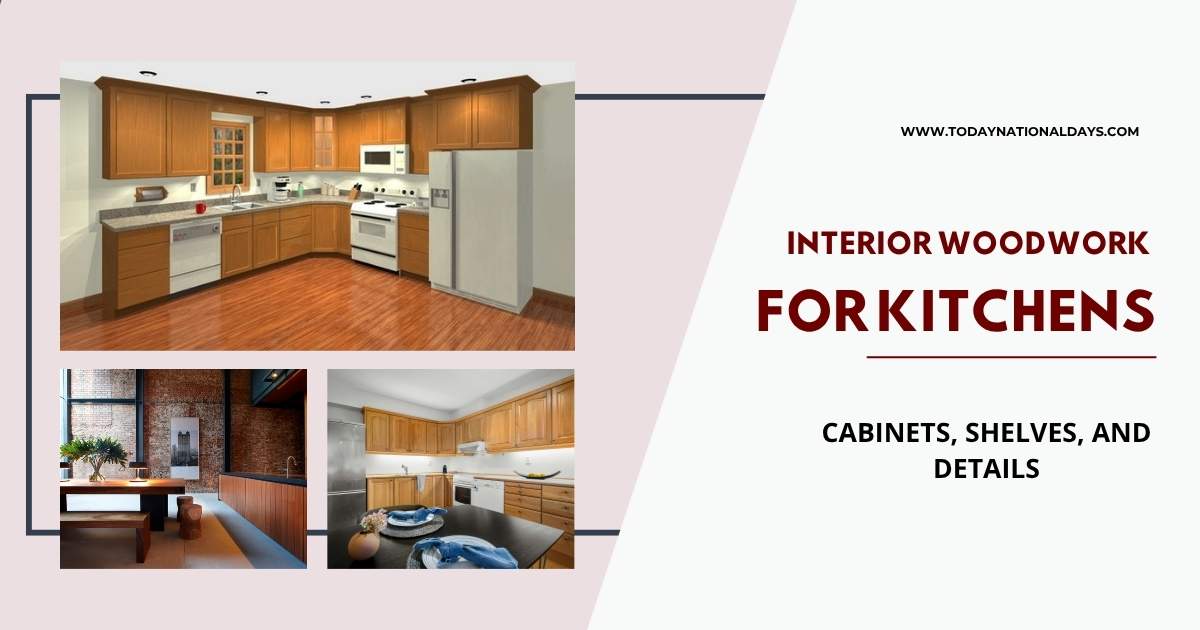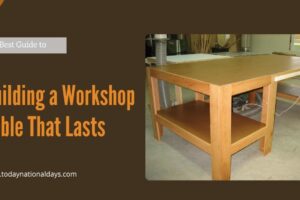
Interior woodwork is the backbone of refined home design, offering structure, warmth, and character that few materials can rival. From intricate crown molding to custom cabinetry, woodwork defines the architectural language of a space. In the USA, where craftsmanship and heritage often intersect, interior woodwork remains a hallmark of both traditional and modern homes. Whether you’re renovating a historic property or building a new space from scratch, understanding the nuances of interior woodwork can dramatically influence the outcome.
This article offers DIY and crafts enthusiasts a reliable guide to woodwork that blends beauty with practicality. From simple wall paneling to intricate ceiling beams, each section presents well-researched ideas that don’t require commercial intervention. If you’re seeking long-term home improvements or weekend project inspiration, these expert-approved woodwork tips will guide you from plan to project.
Top Types of Interior Woodwork Every Home Needs
When it comes to functional and decorative woodworking, certain features never go out of style. Adding these classic woodwork elements to your interiors brings structure, refinement, and value to your home. Here are the key types you can start with:
1. Baseboards and Crown Molding
- Frame your walls and ceilings with professionally cut moldings.
- Use paint or natural wood stain to match your existing decor.
- Simple profiles like square edge or colonial styles are beginner-friendly.
2. Wainscoting and Paneling
- Half-wall wood panels instantly add structure and style.
- Combine vertical slats (board and batten) or raised panels for texture.
- Ideal for dining rooms, hallways, and bathrooms.
3. Built-In Shelves and Bookcases
- Create seamless storage using plywood or hardwood planks.
- Include crown trim or arched framing for a custom finish.
- Paint in bold colors or leave raw wood for a rustic look.
These options require basic tools and materials, such as a circular saw, level, wood glue, brad nails, and sandpaper. You can also find pre-cut molding kits in most hardware stores for faster DIY projects.
Best DIY Wood Accent Walls That Stand Out
Accent walls made of wood are a powerful way to change the atmosphere of a room. They require minimal materials but deliver maximum effect—great for bedrooms, living rooms, and entryways. This section explains different styles and techniques that bring out the beauty of wood.
Popular Wood Accent Wall Styles:
| Style Type | Wood Used | Finish Options | Room Fit |
|---|---|---|---|
| Shiplap | Pine, MDF | Painted or whitewashed | Living room, bathroom |
| Herringbone | Oak, reclaimed | Dark stain or natural | Entryway, office |
| Vertical Slats | Plywood strips | Matte or glossy paint | Bedroom, hallway |
| Geometric Pattern | Cedar or birch | Clear coat or tone stain | Dining area |
Key Steps for Installation:
-
Step 1: Measure and mark wall dimensions
-
Step 2: Cut planks or strips using a miter saw
-
Step 3: Attach wood using construction adhesive and a nail gun
-
Step 4: Fill nail holes, sand edges, and apply desired finish
An accent wall not only adds visual appeal but also insulates against noise and improves room acoustics. Choose sustainable wood sources for added environmental value.
Interior Woodwork Ideas That Improve Small Spaces

Woodwork isn’t limited to large homes. Compact spaces in city apartments or older homes in the UK can benefit greatly from clever woodworking solutions. Built-ins and minimalist trims help maximize space without making it feel crowded.
Three Smart Interior Woodwork Projects for Small Rooms:
1. Wall-Mounted Desk Units
- Use plywood or medium-density fiberboard (MDF).
- Mount to the wall with hidden brackets.
- Add under-shelf storage using repurposed drawers.
2. Window Seating with Hidden Storage
- Construct a bench frame from 2x4s and plywood panels.
- Use hydraulic hinges for an easy-open lid.
- Add a cushion top for comfort and style.
3. Vertical Wooden Dividers
- Use oak or walnut slats to divide spaces without solid walls.
- Stain or paint according to your interior tone.
- Ideal for studio apartments or open-plan kitchens.
Each project adds both form and function to tight areas, making wood a go-to solution for efficient and tasteful interiors.
DIY Woodworking Table: Tools, Wood Types, and Use
| Tool/Wood Type | Purpose | Notes |
|---|---|---|
| Circular Saw | Cutting straight lines | Choose a saw with a guide fence |
| Jigsaw | Curved and irregular cuts | Ideal for custom shapes |
| Sander | Smooth finishing | Orbital sanders reduce scratches |
| Pine Wood | Budget-friendly, easy to cut | Good for baseboards, shelves |
| Birch Plywood | Smooth surface, strong layers | Great for cabinetry and panels |
| Cedar | Aromatic, resistant to moisture | Works well in bathrooms |
Proper tools make woodworking not only faster but safer. Beginners should always wear goggles and follow a measured layout to reduce error.
Best Wood Ceiling Designs for Rustic and Modern Interiors
Wooden ceiling features can completely change how a room feels—adding coziness, structure, or even a bold design element. DIY ceiling work may take extra effort, but the visual payoff is high.
Ceiling Woodwork Ideas:
-
Exposed Beams
Install faux or real wooden beams across the ceiling. Use lighter woods for a farmhouse look or darker finishes for formal rooms. -
Tongue-and-Groove Panels
Fit interlocking boards across the ceiling for a uniform surface. Use pine or cedar for a natural aroma and texture. -
Coffered Ceilings
Create a grid pattern using trim and panels. This adds dimension and is ideal for home offices or libraries. -
Plywood Ceiling Tiles
Cut into square or rectangle tiles, then stain or paint. Arrange in creative patterns for a modern finish.
These ceiling treatments pair well with recessed lighting, chandeliers, or industrial-style fans. Always ensure that ceiling joists can support any added wood structures before installation.
Interior Woodwork for Kitchens: Cabinets, Shelves, and Details

The kitchen is one of the most used spaces in a home, and well-designed woodwork here makes a noticeable difference. Custom wood features are both functional and stylish.
Key Areas for DIY Kitchen Woodwork:
1. Floating Shelves
- Install above countertops or between cabinets.
- Use reclaimed barn wood for rustic charm or sanded birch for a cleaner look.
2. Cabinet Door Upgrades
- Replace flat cabinet fronts with shaker-style doors.
- Use MDF or plywood, and add soft-close hinges.
3. Wood Trim on Islands
- Attach panel molding around kitchen islands for a framed appearance.
- Add beadboard panels or fluted wood for extra detail.
Interior Woodwork Safety and Maintenance Tips
Working with wood involves sharp tools, dust, and sometimes harsh chemicals. Following safety procedures ensures both successful completion and personal protection.
General Safety Tips:
- Always wear eye and ear protection while cutting
- Work in well-ventilated areas, especially when staining
- Use clamps to secure wood when sawing or drilling
- Keep children and pets away from the workspace
Maintenance Guidelines:
- Regularly wipe wood surfaces with a damp cloth to remove dust
- Use wood polish or beeswax for finishing coats
- Avoid placing hot or wet items directly on finished wood
- Inspect annually for cracks or signs of pests
Good maintenance keeps woodwork looking sharp and extends its life without needing reinstallation.
Final Thoughts
Interior woodwork continues to stand out as one of the most durable, stylish, and customizable design elements for the home. Whether you’re adding crown molding, designing built-in bookshelves, or crafting accent walls, the options suit all experience levels and home sizes.
Finishing Options That Protect and Beautify
- Stains: Highlight natural grain and add depth.
- Paints: Offer color flexibility and conceal imperfections.
- Clear coats: Polyurethane or lacquer for durability and sheen.
- Oil finishes: Penetrate wood for a natural, matte look.
FAQs on Interior Woodwork
Q1. What is the easiest wood to start with for beginners?
Pine is soft, affordable, and easy to cut, making it ideal for first-time woodworkers.
Q2. Can I do interior woodwork without power tools?
Yes, smaller projects like trim or simple shelves can be completed using hand tools like saws and hammers.
Q3. How do I prevent wood from warping indoors?
Use kiln-dried wood, store it flat, and apply a proper finish to seal moisture.
Q4. Are interior woodwork projects expensive?
Not necessarily. Many materials can be found reclaimed or purchased in bulk to reduce costs.
Q5. Can wood be used in high-moisture areas like bathrooms?
Yes, but it’s best to use moisture-resistant woods like cedar and apply protective coatings.






